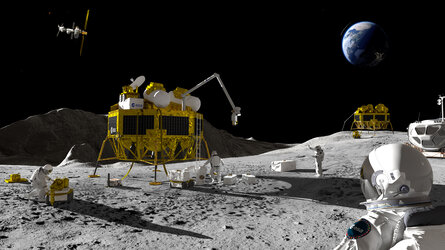Accept all cookies Accept only essential cookies See our Cookie Notice

About ESA
The European Space Agency (ESA) is Europe’s gateway to space. Its mission is to shape the development of Europe’s space capability and ensure that investment in space continues to deliver benefits to the citizens of Europe and the world.
Highlights
ESA - United space in Europe
This is ESA ESA facts Member States & Cooperating States Funding Director General Top management For Member State Delegations European vision European Space Policy ESA & EU Space Councils Responsibility & Sustainability Annual Report Calendar of meetings Corporate newsEstablishments & sites
ESA Headquarters ESA ESTEC ESA ESOC ESA ESRIN ESA EAC ESA ESAC Europe's Spaceport ESA ESEC ESA ECSAT Brussels Office Washington OfficeWorking with ESA
Business with ESA ESA Commercialisation Gateway Law at ESA Careers Cyber resilience at ESA IT at ESA Newsroom Partnerships Merchandising Licence Education Open Space Innovation Platform Integrity and Reporting Administrative Tribunal Health and SafetyMore about ESA
History ESA Historical Archives Exhibitions Publications Art & Culture ESA Merchandise Kids Diversity ESA Brand CentreLatest
Space in Member States
Find out more about space activities in our 23 Member States, and understand how ESA works together with their national agencies, institutions and organisations.
Science & Exploration
Exploring our Solar System and unlocking the secrets of the Universe
Go to topicAstronauts
Missions
Juice Euclid Webb Solar Orbiter BepiColombo Gaia ExoMars Cheops Exoplanet missions More missionsActivities
International Space Station Orion service module Gateway Concordia Caves & Pangaea BenefitsLatest
Space Safety
Protecting life and infrastructure on Earth and in orbit
Go to topicAsteroids
Asteroids and Planetary Defence Asteroid danger explained Flyeye telescope: asteroid detection Hera mission: asteroid deflection Near-Earth Object Coordination CentreSpace junk
About space debris Space debris by the numbers Space Environment Report In space refuelling, refurbishing and removingSafety from space
Clean Space ecodesign Zero Debris Technologies Space for Earth Supporting Sustainable DevelopmentLatest
Applications
Using space to benefit citizens and meet future challenges on Earth
Go to topicObserving the Earth
Observing the Earth Future EO Copernicus Meteorology Space for our climate Satellite missionsCommercialisation
ESA Commercialisation Gateway Open Space Innovation Platform Business Incubation ESA Space SolutionsLatest
Enabling & Support
Making space accessible and developing the technologies for the future
Go to topicBuilding missions
Space Engineering and Technology Test centre Laboratories Concurrent Design Facility Preparing for the future Shaping the Future Discovery and Preparation Advanced Concepts TeamSpace transportation
Space Transportation Ariane Vega Space Rider Future space transportation Boost! Europe's Spaceport Launches from Europe's Spaceport from 2012Latest
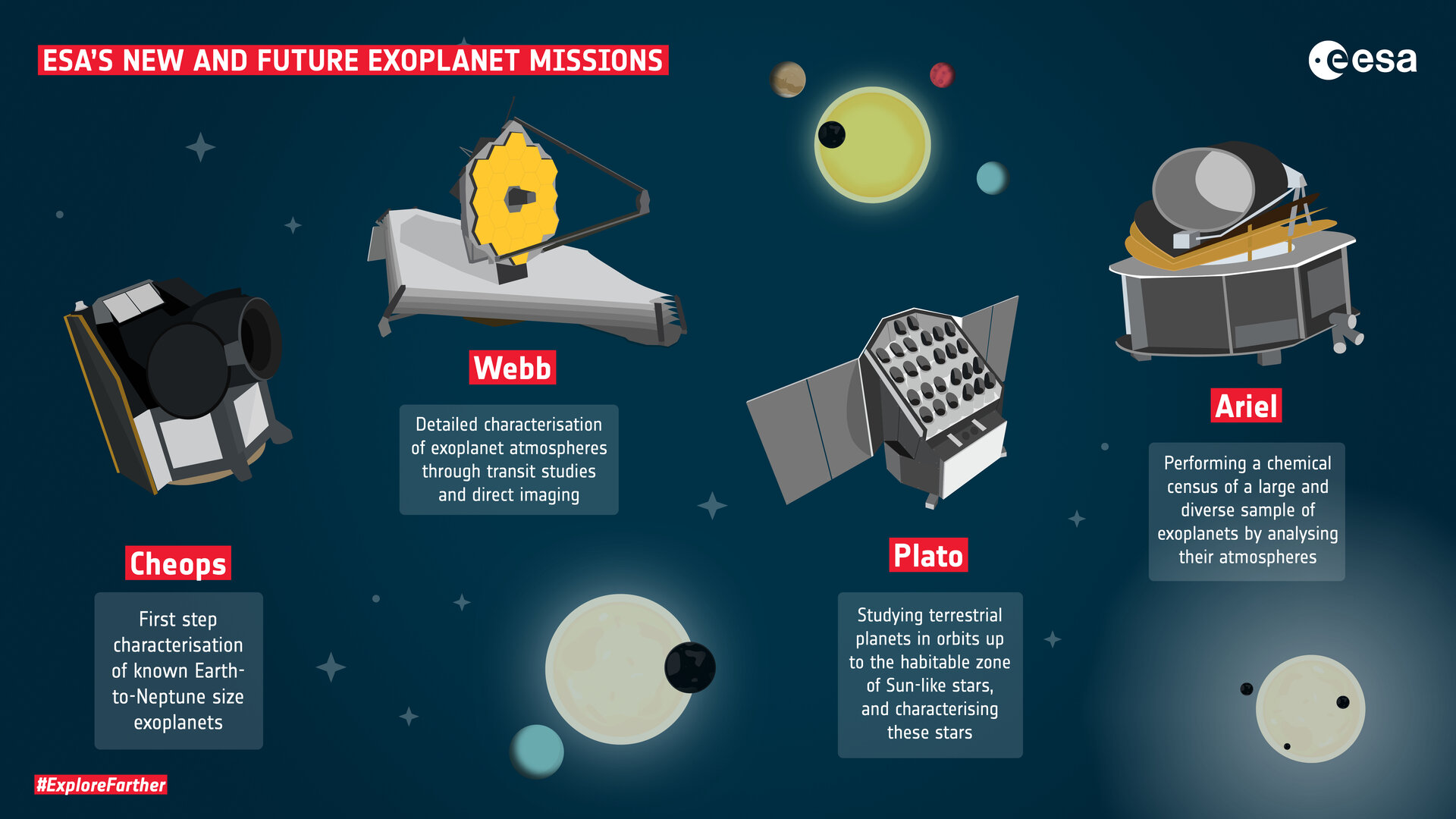
ESA’s new and future exoplanet missions
Thank you for liking
You have already liked this page, you can only like it once!
ESA’s trifecta of dedicated exoplanet missions – Cheops, Plato and Ariel – will also be complemented with the James Webb Space Telescope mission.
The Characterising Exoplanet Satellite, Cheops, was launched in December 2019 and is observing bright stars known to host exoplanets, in particular Earth-to-Neptune-sized planets. It is recording the precise sizes of these relatively small planets and combined with mass measurements already calculated from other observatories, will enable the planet's density to be determined, and thus make a first-step characterisation of the nature of these worlds. Cheops will also identify candidates for additional study by future missions. For example, it will provide well-characterised targets for the international James Webb Space Telescope, which will perform further detailed studies of their atmospheres.
Plato, the PLAnetary Transits and Oscillations of stars mission, is a next-generation planet hunter with an emphasis on the properties of rocky planets in orbits up to the habitable zone around Sun-like stars – the location from a star where liquid water can exist on the planet's surface. Importantly, it will also analyse the planet's host star, including its age, and thus give insight into the evolutionary state of the entire extrasolar system.
Ariel, the Atmospheric Remote-Sensing Infrared Exoplanet Large-survey mission, will perform a chemical census of a large and diverse sample of exoplanets by analysing their atmospheres in great detail, finally answering still open questions like: What are exoplanets made of, how do planets and planetary systems form, and how do planets and their atmospheres evolve?
With the complementary work of both ground- and space-based observatories, we will get closer to understanding one of humanity's biggest questions: are we alone in the Universe?
-
CREDIT
ESA -
LICENCE
CC BY-SA 3.0 IGO or ESA Standard Licence
(content can be used under either licence)

Children imagine exoplanets
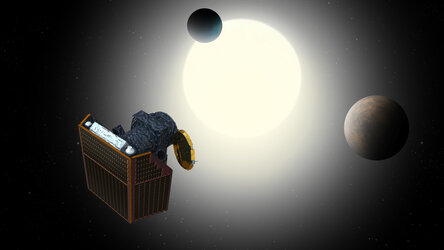
Cheops

Cheops
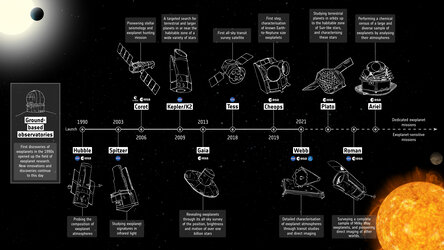
Exoplanet mission timeline
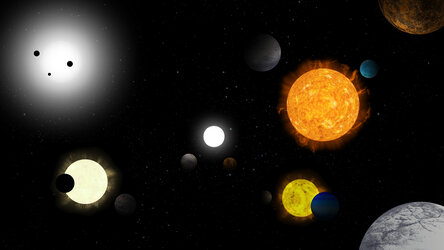














 Germany
Germany
 Austria
Austria
 Belgium
Belgium
 Denmark
Denmark
 Spain
Spain
 Estonia
Estonia
 Finland
Finland
 France
France
 Greece
Greece
 Hungary
Hungary
 Ireland
Ireland
 Italy
Italy
 Luxembourg
Luxembourg
 Norway
Norway
 The Netherlands
The Netherlands
 Poland
Poland
 Portugal
Portugal
 Czechia
Czechia
 Romania
Romania
 United Kingdom
United Kingdom
 Slovenia
Slovenia
 Sweden
Sweden
 Switzerland
Switzerland











